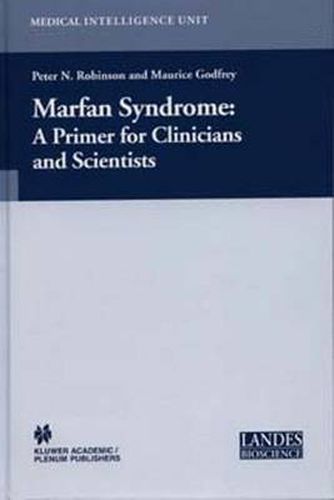Readings Newsletter
Become a Readings Member to make your shopping experience even easier.
Sign in or sign up for free!
You’re not far away from qualifying for FREE standard shipping within Australia
You’ve qualified for FREE standard shipping within Australia
The cart is loading…






This title is printed to order. This book may have been self-published. If so, we cannot guarantee the quality of the content. In the main most books will have gone through the editing process however some may not. We therefore suggest that you be aware of this before ordering this book. If in doubt check either the author or publisher’s details as we are unable to accept any returns unless they are faulty. Please contact us if you have any questions.
Historical Introduction The Marfan Syndrome: From Clinical Delineation to Mutational Characterization, a Semiautobiographic Account VictorA. McKusick l n 1876, E. Williams, an ophthalmologistin Cincinnati, Ohio, described ectopia lentis in a brother and sister who were exceptionally tall and had been loosejointed from birth. I Although there is a Williams syndrome that has aortic manifestations (supravalvar aortic stenosis), the name Williams was never associated with the disorder we now call Marfan syndrome. The reason is clear: Williamswas geographically removed from the leading medical centers and published in the Transactions of the American Ophthalmological Society; surely his report attracted little attention and the non-ocular features were not emphasized. 2 The case report that brought the disorder to attention was provided by a prominent Pari- sian professor of pediatrics, Antoine Bernard-Jean Marfan (1858-1942), who did much to establish pediatrics as a specialty in France and elsewhere. He was the author of widely read textbooks and monographson pediatrictopics and waseditor of Le Nourrisson for a great many years. In addition to the syndromeunder discussion here, his name is often attached to Marfan’s law (that immunity to pulmonary phthisis is conferred by the healing of a local tuberculous 3 lesion) and Marfan’s subxiphoid approach for aspiratingfluid from the pericardial sac. (Please pardon my use of the possessive form of the eponym in these two instances!) Pictures of Marfan (Fig.
$9.00 standard shipping within Australia
FREE standard shipping within Australia for orders over $100.00
Express & International shipping calculated at checkout
This title is printed to order. This book may have been self-published. If so, we cannot guarantee the quality of the content. In the main most books will have gone through the editing process however some may not. We therefore suggest that you be aware of this before ordering this book. If in doubt check either the author or publisher’s details as we are unable to accept any returns unless they are faulty. Please contact us if you have any questions.
Historical Introduction The Marfan Syndrome: From Clinical Delineation to Mutational Characterization, a Semiautobiographic Account VictorA. McKusick l n 1876, E. Williams, an ophthalmologistin Cincinnati, Ohio, described ectopia lentis in a brother and sister who were exceptionally tall and had been loosejointed from birth. I Although there is a Williams syndrome that has aortic manifestations (supravalvar aortic stenosis), the name Williams was never associated with the disorder we now call Marfan syndrome. The reason is clear: Williamswas geographically removed from the leading medical centers and published in the Transactions of the American Ophthalmological Society; surely his report attracted little attention and the non-ocular features were not emphasized. 2 The case report that brought the disorder to attention was provided by a prominent Pari- sian professor of pediatrics, Antoine Bernard-Jean Marfan (1858-1942), who did much to establish pediatrics as a specialty in France and elsewhere. He was the author of widely read textbooks and monographson pediatrictopics and waseditor of Le Nourrisson for a great many years. In addition to the syndromeunder discussion here, his name is often attached to Marfan’s law (that immunity to pulmonary phthisis is conferred by the healing of a local tuberculous 3 lesion) and Marfan’s subxiphoid approach for aspiratingfluid from the pericardial sac. (Please pardon my use of the possessive form of the eponym in these two instances!) Pictures of Marfan (Fig.